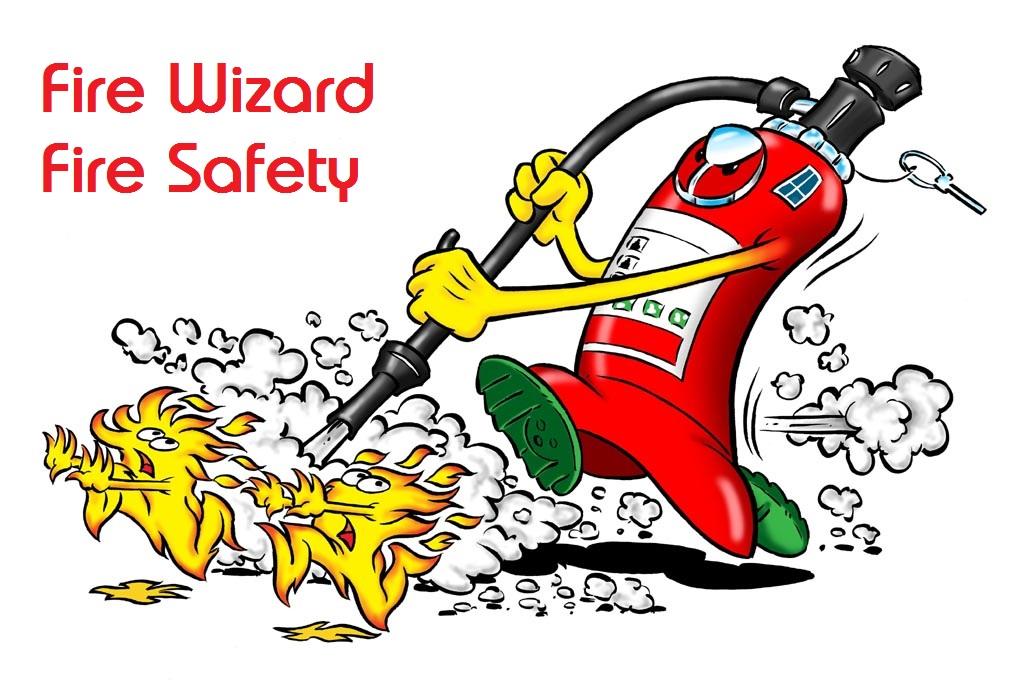-
Posts
2,564 -
Joined
-
Last visited
Everything posted by AnthonyB
-
Yes, a Ni-Cad cell should be on the back.
-

Fire Alarm Systems in converted warehouses/factories
AnthonyB replied to Sheff's topic in Fire Alarm Systems
But if the conversions complied with Building Regulations then https://www.local.gov.uk/sites/default/files/documents/fire-safety-purpose-built-04b.pdf is more relevant, not all conversions are non compliant and require the LACORS guide - these are usually house conversions, large scale commercial to residential conversions follow Approved Document B as a new build and so generally only require smoke detection as part of a smoke control system in common parts. -

Testing of smoke detectors as part of a commercial fire alarm
AnthonyB replied to a topic in Fire Alarm Systems
Has to be using test smoke/heat. If they aren't then they are doing the equivalent of what in the extinguisher trade is known as 'rag & tag' i.e. not actually doing anything other than filling in the service label/report & adding a tamper tag. Wouldn't surprise me if they don't open up the panel and check the panels with a test meter either. Far too many con artists out there in the fire trade. From the British Standard for Fire Alarms: c) Every heat detector should be functionally tested by means of a suitable heat source, unless operation of the detector in this manner would then necessitate replacement of part or all of the sensing element (e.g. as in fusible link point detectors or non-integrating line detectors). Special test arrangements are required for fusible link heat detectors. The heat source should not have the potential to ignite a fire; live flame should not be used, and special equipment might be necessary in explosive atmospheres. d) Point smoke detectors should be functionally tested by a method that confirms that smoke can enter the detector chamber and produce a fire alarm signal (e.g. by use of apparatus that generates simulated smoke or suitable aerosols around the detector). It should be ensured that the material used does not cause damage to, or affect the subsequent performance of, the detector; the manufacturer’s guidance on suitable materials should be followed. -
Possibly. Easiest way to tell is to switch all the lights off and see how easy it is to see your way out, you usually need the equivalent light of a full moon on a clear night to safely see your way out (this is where the original EL lighting levels came from!). Consider the available light at the start and end of the day (when it's darkest), time of year and the impact of overcast weather. Having done this you may conclude you are fine. If not then depending on the size of the offices and number of people you may need either emergency lighting - or torches!
-

Suitable fire door closer used with anti-slam features
AnthonyB replied to a topic in Fire Doors and Accessories
If it's an antibarricade door you need to use fire door rated Floor Spring Door Closers, I have a local authority client whose Childrens Homes needed bedroom doors to be anti-barricade but also self closing FD30s doors https://www.gjohns.co.uk/door-controls/floor-springs-door-closers.html -
Sounds like you need an out of hours call out, costly but at least they will see the issue. The cause needn't be the panel and could equally be the wiring or a device, I'd not want to replace the panel until sure it was the culprit.
-
Sounds like commercial sleeping risk (i.e. not a dwelling), should be an FD30s doorset if it's protecting the escape route. This should have been picked up on your Fire Risk Assessment
-

Are specific fire door gaps a legal requirement?
AnthonyB replied to a topic in Fire Doors and Accessories
They will try and palm you off by saying it got a Building Regulations Completion Certificate - which in actuality means nothing (as Grenfell proved) - if you get no joy get fire service enforcement in to look at it. -
Emergency light fittings almost invariably use NiCad batteries anyway, so aren't really a concern, I'd be interested to know whose brand is using Li-ion
-
Fire safety legislation is functional and does not go into specific prescriptive detail so you won't find anything specific in the legislation on storage in cupboards (although it could be seen to breach functional standards in 4(1)(a) & (c) of the regulations.) A Henry will burn and produce a lot of fire effluent if exposed to sufficient external flame, possibly if your fuseboards are old and in a combustible (plastic) housing, this could be seen as a suitable pilot flame source. Private property or not you are leaseholders, not freeholders, so be aware there may be sufficient lease clauses to empower the freeholder and their agent in their actions, also the Housing Act applies across the whole building and can be resorted to for enforcement if there is a genuine risk. Zero tolerance is preferred for management companies as easy to implement & monitor, so many use this rather than a more sympathetic risk based managed approach (which can be completely fine & compliant). Having said all that the legislation is risk based and so whilst a fuse cupboard should always be empty in an ideal world there are certain combinations of items that could be deemed low risk. You could also argue if the cupboards are now suitably fire proofed and smoke sealed they would contain a fire (if a small cupboard it might even contain it long enough to go out through lack of oxygen)
-
I'm guessing it's a service visit where a large percentage of the points are tested and the panel log checked to see they've reacted correctly. If so then as part of servicing sounders are supposed to be tested so it's correct. Most building users ask for the sounders to be silenced during servicing though although this does mean sounders end up never tested (partcularly the out of the way ones where no one will be in the weekly test.
-
If the fire separation between it and the upper floors is OK then it wouldn't - but if (possible as a pre '91 conversion) it isn't then it'll possibly need heat detection off the common system
-
If potential escape would only be needed through those doors from the hall to the corridor and not vice versa then yes.
-

Fire escape door to outside with roller shutter protection
AnthonyB replied to Heart4art's topic in Fire Exits
HI, 1) No as it is under 60 persons and a shop (technically) not a place of assembly 2) Yes, you could brick the door up all night if you wanted if the premises were closed and empty! 3) 750mm minimum (assuming no wheelchair access) -
Try the Housing/Environmental Health under the Housing Act - if they can't help then sadly you are stuck.
-
Self closers to interior doors used to be a Building Regs requirement, but was relaxed years ago. It would be no issue to remove closers to all other than the door to the garage.
-
Seating and gangways in a hall or assembly space should be so arranged to allow free and ready access direct to the exits. Audiences seated in rows will first have to make their way to the end of the row before being able to use the escape routes provided. Seating and gangways in an auditorium should therefore be so arranged as to allow free and ready access direct to the exits. Standing and sitting in gangways, or in front of any exit, should not be permitted. This includes adults standing by children. (Dancing in would be considered the same as sitting or standing, i.e. a presence) That's what the Government Guidance says. If you want dancing, have a dance floor!
-
Regardless of temporary or permanent as it's not a private dwelling you must comply with the Fire Safety Order which includes appropriate General Fire Precautions - which may not need to be much in your case!
-
1. Not necessarily 2. Yes, you should be getting out not messing around with extinguishers that you are untrained in and aren't suited for the risks in your home. (A fire blanket in your kitchen is better as long as it is BS Kitemarked and not the £4 Chinese stuff on eBay/Amazon that are counterfeit & don't work) 3. If not in good order yes. Whilst the guidance allows for smaller old blocks of flats to retain original fire doors that's only on the basis that they were compliant fire doors originally by the standard of the day and that they are in good condition - yours sound not to be. 4. Standards have changed, especially for HA's so higher cover is increasingly required. Also if they are deeming the premises as being full evacuate they would need wider coverage from the common system - you don't make clear if the detectors being fitted are domestic or an extension to the common one. 5. Depends on your lease terms
-
It doesn't sound like you will be coming under the statutory ADR regime unless you are carrying hazardous goods so you wont be required to carry an extinguisher. You might still consider it wise to have an extinguisher in any case in the cab - usually 2kg is advisable (anything smaller will be of little use) with Powder being most commonly used.
-

Fire stopping & compartmentalisation for dry riser
AnthonyB replied to a topic in Passive Fire Protection
As long as it is a protective shaft it should be fine - i.e. all horizontal penetrations suitably fire stopped. With dry riser shafts I sometimes find that whilst the original landing valves are stopped correctly, where a landing valve has had to be replaced there is a large hole around the new valve. -
Not without Building Regulations approval. If you think unauthorised work is going on contact your council Building Control for the Building Regulations contravention & the council Environmental Health/Housing or the Fire Service for the fire safety issues resulting from approval (it might be in either jurisdiction, start with the council)
-
Several possibilities, you should really get your service engineer out.
-
If your let is no bigger than a typical family house and does not have a complex layout you may be able to use this alternative guidance which may allow your current layout: https://www.gov.uk/government/publications/do-you-have-paying-guests
-
Check the manufacturer's instructions - you will find most are self testing and do not require servicing as long as they show that they are OK. A log of regular inspections of the status indicators, pad & battery dates and the accessories kit should suffice.

